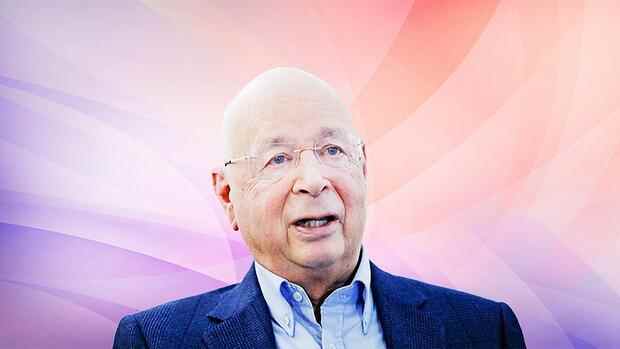This year the Covid-19 pandemic and the myriad crises it has spawned could finally subside. But even then, major challenges are in sight – from the failure of climate protection measures to the erosion of social cohesion. To mitigate the risks, leaders must opt for a different governance model.
When our institutions are well governed, we pay little attention to them. They are barely visible infrastructure that supports the economy and virtually every aspect of social order. “Good” governance made income growth and social peace possible in the second half of the 20th century.
Today, however, many people have lost confidence in institutions and their leaders. Faced with mounting risks and our collective failure to manage them, we instead look for culprits.
Some point the finger at incompetent political leaders, others blame CEOs – and a growing minority blame everything on an “elite conspiracy”.
Top jobs of the day
Find the best jobs now and
be notified by email.
However, the truth is much more complicated. At the root of our failure to anticipate and manage global risks – including climate change and deepening social divisions, debt crises and inadequate technological regulation – lies in an unresolved problem of global governance.
Our institutions and their governance are no longer fit for purpose. We tend to think of history as a series of cataclysmic, seismic events. But the deterioration in global governance is a case of gradual erosion.
The rule of the boss used to work
In the age of Governance 1.0 immediately after World War II, both public and corporate governance were mostly characterized by the rule of “one man”: the elected or unelected “boss”. This type of leadership worked well in a society where the cost of information was high, hierarchical power often functioned smoothly, and technological and economic advances benefited almost everyone.
Created in the late 1960s Governance 2.0 model affirmed the primacy of material wealth and coincided with the rise of shareholder capitalism preached by economists like Milton Friedman and ongoing global financialization.
Accountable only to shareholders, the new managerial class ruled unreservedly and with global reach. Although the global financial crisis of 2008 appeared to delegitimize Governance 2.0, its view still prevailed until the outbreak of the Covid-19 pandemic.
The brutal social and economic shock caused by Corona ushered in Governance 3.0. Today operational crisis management dominates the decisions, possible unintended consequences are rather meaningless. This short-term, trial-and-error approach has led to a haphazard approach to the pandemic and its socio-economic fallout.
When the pandemic is over, we need a new model. Governance 4.0 would differ from its predecessors in several fundamental ways.
- First, today’s short-term crisis management would be replaced by long-term strategic thinking. The focus on current issues such as the pandemic, socio-economic crises and people’s mental health must be complemented by measures to protect the environment and combat climate change, as well as addressing related social challenges such as involuntary migration.
- Second, a Governance 4.0 must replace the tunnel vision and top-down approach that has prevailed in the past. We live in a highly complex and interconnected world. This also means that the roles and responsibilities of each stakeholder in society must change. Business can no longer ignore its social and environmental impacts, government can no longer pretend that it alone has all the answers.
- Third, the current emphasis on a narrow view of economics and short-term financial interests must end. Instead, the primacy of society and nature should be at the heart of any new system of governance—whether for corporations or governments. Finance and economy are vital, but they must serve society and nature, not the other way around.
The world has changed, so public and corporate leadership must change too. Major structural changes such as the fourth industrial revolution and climate change are now disrupting all industries and power centers. Technologies like blockchain are replacing centralized and hierarchical organizations with decentralized, autonomous entities. At the same time, social, economic and digital inequalities are increasing.
Currently, many executives are still stuck in the shareholder-capitalism mentality of Governance 2.0, some societies even still prefer the structure of Governance 1.0. And as long as Covid-19 remains a threat, the crisis mentality of Governance 3.0 will continue to dominate boardroom and cabinet discussions.
But many executives are already thinking and acting like pioneers of a new governance era. This includes business leaders who champion environmental, social and governance metrics, and politicians like French President Emmanuel Macron and Italian Prime Minister Mario Draghi who push boundaries. Above all, however, young people are demanding a better future.
Previous government manuals no longer apply
Those who still follow the government manuals of earlier eras criticize such leaders for not staying in their lane. However, we should welcome leaders who are exploring largely uncharted territory, acting as trailblazers and championing concrete action to combat climate change and social injustice.
The best indicator of responsible corporate governance is the extent to which leaders recognize stakeholder responsibilities. While measuring stakeholder accountability is still in its infancy, the development of consistent metrics will enable us to assess whether leaders are assuming their role and responsibilities more broadly.
The 21st century will bring many unprecedented challenges. If we want our children and grandchildren to look back on the progress we saw at the end of the 20th century with the same satisfaction, then we need Governance 4.0.
The author: Klaus Schwab is the founder and executive chairman of the World Economic Forum.
More: Plea for a renewed capitalism.
